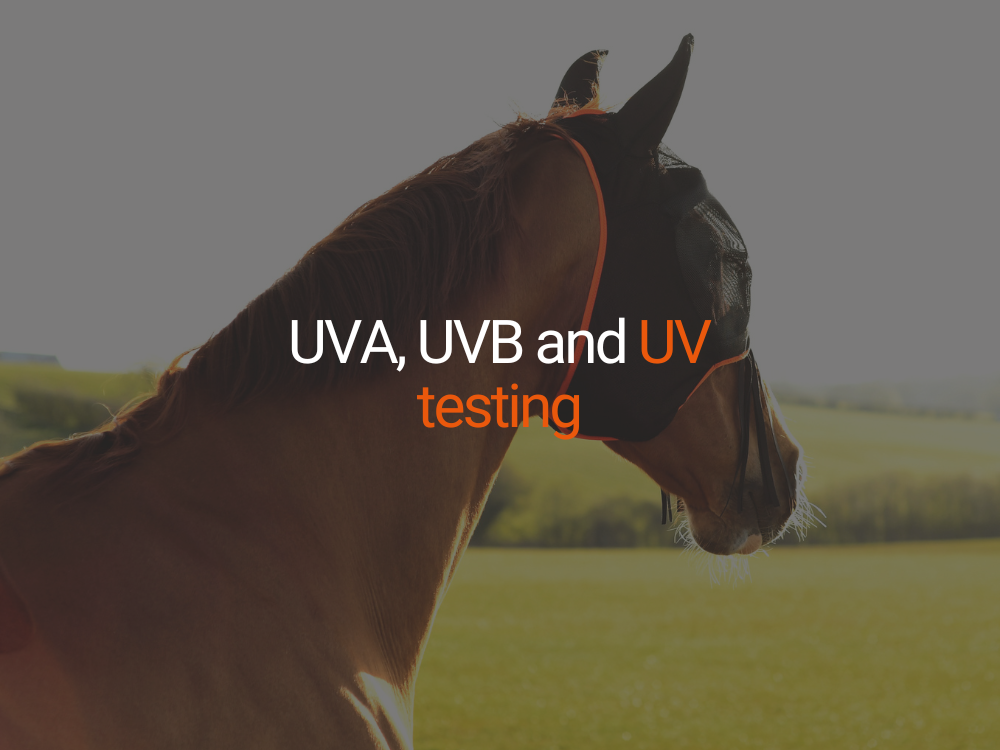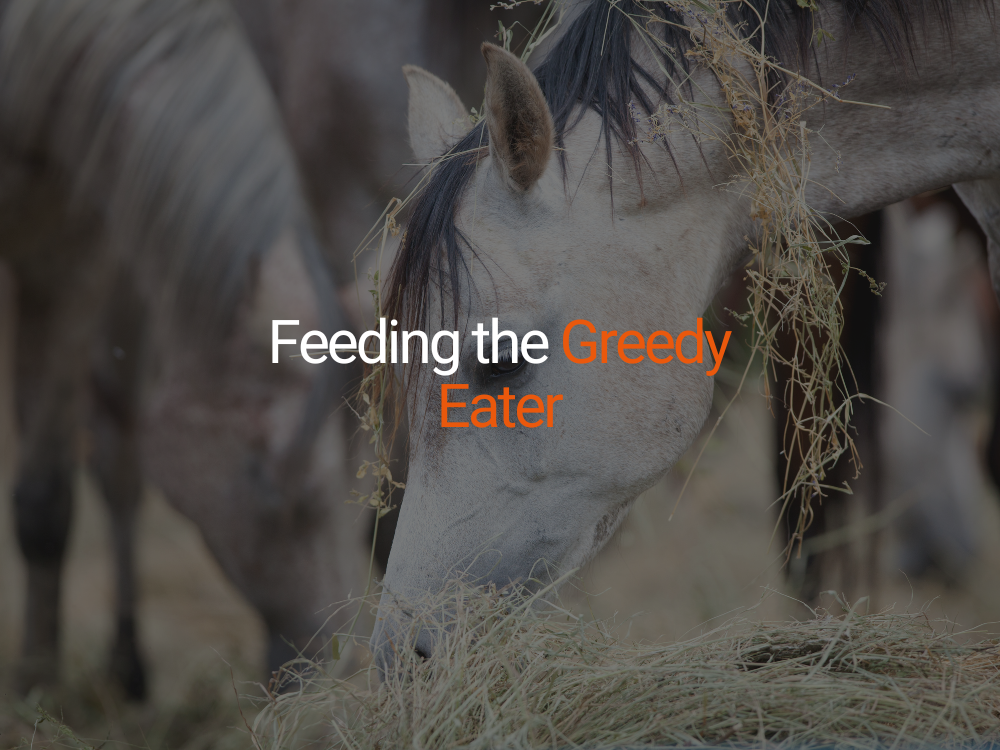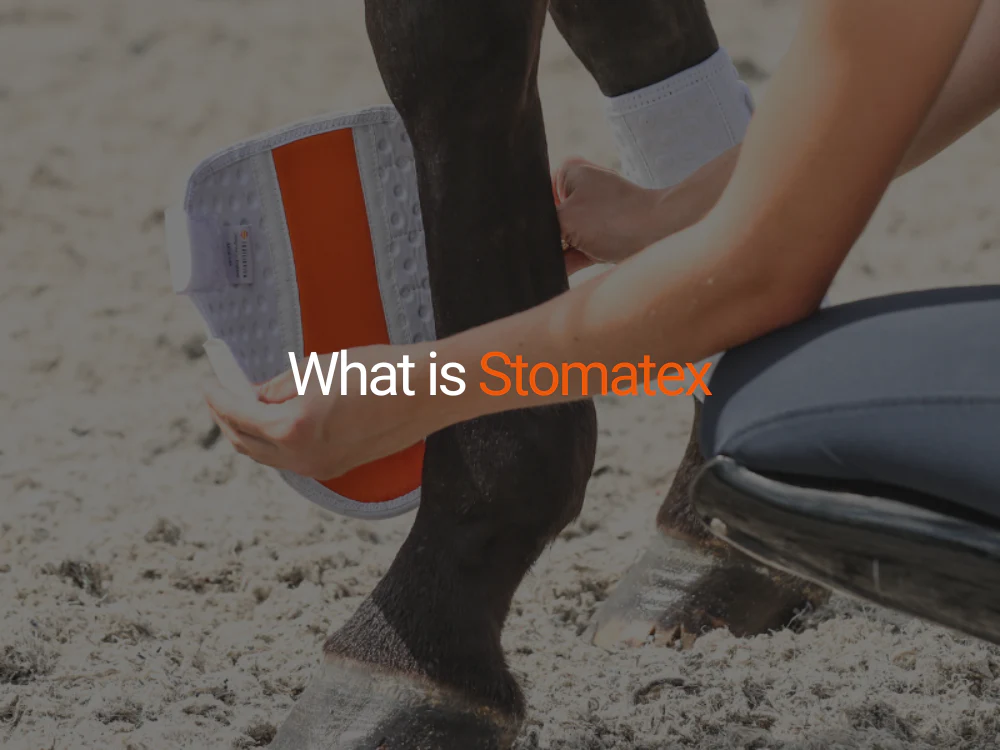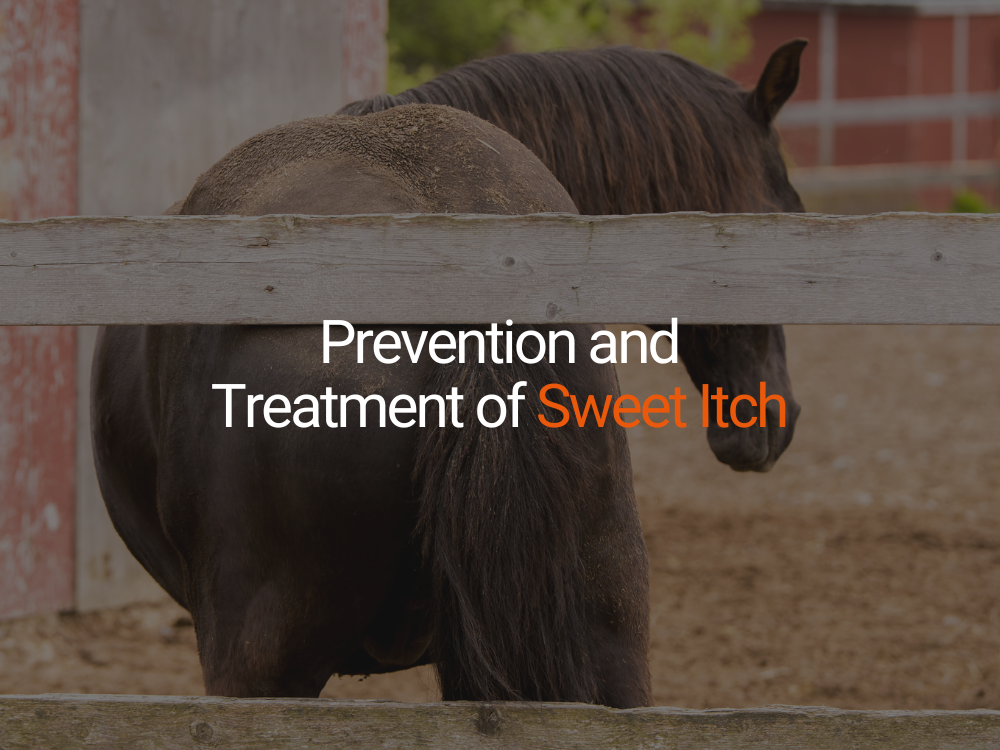Understanding Sweet Itch.
The weather is getting warmer, the sun is high in the sky, and your horse starts itching and rubbing his mane and tail. Sound familiar? Many owners dread the onset of summer because of the continuous threat of sweet itch.
Sweet itch, or Summer Seasonal Recurrent Dermatitis, is an allergic reaction to the bites and saliva of Culicoides midges. It affects any breed or age of horse and usually occurs between the months of April and October when midges are most active. The threat of sweet itch should decrease during spring and autumn and disappear during the winter. The allergic reaction can range from mild to very severe, resulting in hair loss and bleeding scabs, which may lead to infection. Therefore, it is essential to recognise sweet itch as soon as possible, and take action to prevent it worsening or, if possible, prevent it from occurring at all.
What are the symptoms of sweet itch?
Sweet itch symptoms can vary greatly between horses, as some suffer more serious effects than others. Mild symptoms include itching and rubbing, usually around the mane and tail and along the top of the back. This can cause patchy hair loss on the coat and loss of mane and tail hair, which may lead to broken and damaged skin. If left untreated, the damaged skin can become sore and infected. In severe cases, sweet itch can extend under the belly, and down as far as the legs.
There are some behavioural signs to look out for, too. Horses suffering with sweet itch may become easily agitated, restless or lethargic and show a lack of concentration during work. Vigorous swishing of the tail or headshaking is also common.
How do I prevent sweet itch?Prevention is better than cure, and there are a number of measures you can take to minimise the risk of your horse developing sweet itch.
Good management
Midges are mostly active at dawn and dusk, so if possible, bring your horse inside at these times. Try protecting your horse in the stable by applying fly repellent or cover the stable door with fly-proof netting. Be aware that certain field conditions are more attractive to midges since they congregate near water or boggy marshes, so try not to turn out near these areas.
Fly repellents
It’s important to do as much as possible to keep flies and midges away. Using a fly repellent can do just that, and they are available as sprays, creams or gels, so there is something to suit everyone. Horses respond differently to each brand of repellent, so make sure you find the one that is right for your horse. Although usually very effective, repellents do wear off the skin over time, so they may need to be applied a couple of times a day, or every few hours if midges become particularly bad.
Sheets and hoods
Specially designed sweet itch sheets and hoods are now available which enable horses to be turned out without the need for frequent application of repellents. Special fabrics are often used that midges are unable to penetrate. They added bonus is that they also protect the hair, mane, and tail from being rubbed.
How do I treat sweet itch?
When sweet itch strikes, it is important to treat it as soon as possible. Keep irritated areas clean and dry. If the skin is sore or broken, apply a healing agent like calamine lotion or a nappy rash cream such as Sudocrem® to help soothe irritation and soreness. Remember that these products won’t protect from further bites. Rubbing benzyl benzoate into the skin is also known to help (although this is not recommended for use on broken skin), or look for an alternative made from natural ingredients.
With good management and care, sweet itch is a manageable condition, allowing you and your horse to enjoy the summer months. However, if the sweet itch becomes too severe, or you are worried about infection, it is always wise to consult your vet.
For more information or advice on sweet itch, contact the Itchy Horse Company (Formerly known as the National Sweet Itch Centre), Tel: (01352) 840333; visit: HTTP://WWW.itchyhorse.CO.UK





















